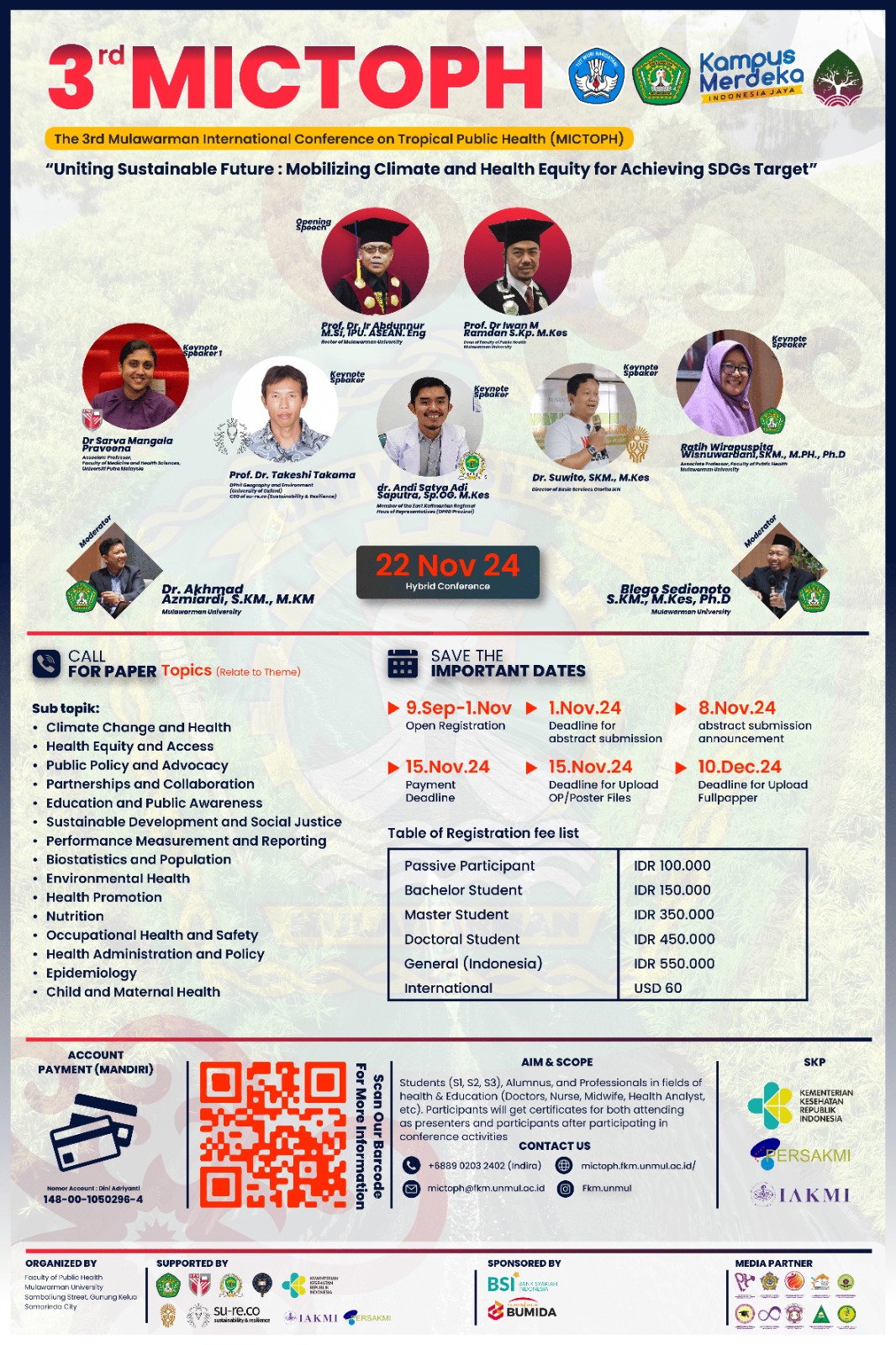Risk Factors of Wasting among Children under 5 Years old
Keywords:
Wasting, maternal education, family income, non-exclusive breastfeeding, history of infectious diseasesAbstract
Background: Wasting is defined as low weight-for-height. It usually occurs when a person has not had food of adequate quality and quantity and they have had frequent or prolonged illnesses. Wasting in children is associated with a higher risk of death if not treated properly. In the working area of Toili 1 Community Health Center, the prevalence of wasting has shown an increasing trend in the last 3 years (2021-2023) Objective: This study aimed to analyze the risk factors for wasting in toddlers in the Toili I Community Health Center working area Research Methods/ Implementation Methods: This is an analytical observational study with a case- control design in the Toili I Community Health Center working area in May 202. A total of 135 wasting toddlers and 135 normal toddlers were involved in the research. Sample selection was carried out randomly. Data was collected primarily (using a questionnaire) and then analyzed using the chi- square test and multiple logistic regression Results: Different proportions were obtained between wasting and normal toddlers. In the wasting group of toddlers, the percentage of low maternal education, low family income, non-exclusive breastfeeding, non-varied feeding, low birth weight, and those with a history of infectious diseases, were higher than in the normal toddler group respectively, namely 40.0% Vs 33.3%; 17.8% Vs 1.5%; 28.9% Vs 10.4%; 49.0% Vs 0%; 5.9% Vs 1.5%. This difference shows a significant relationship to the incidence of wasting (p-Value <0.05). Conclusion/Lesson Learned: The mother's education level, family income, breastfeeding, variations in feeding, birth weight, and history of infectious diseases influence the incidence of wasting in the Toili I Community Health Center working area. Future research can analyze predictions of wasting incidents in toddlers by involving these variables in a study perspective.





